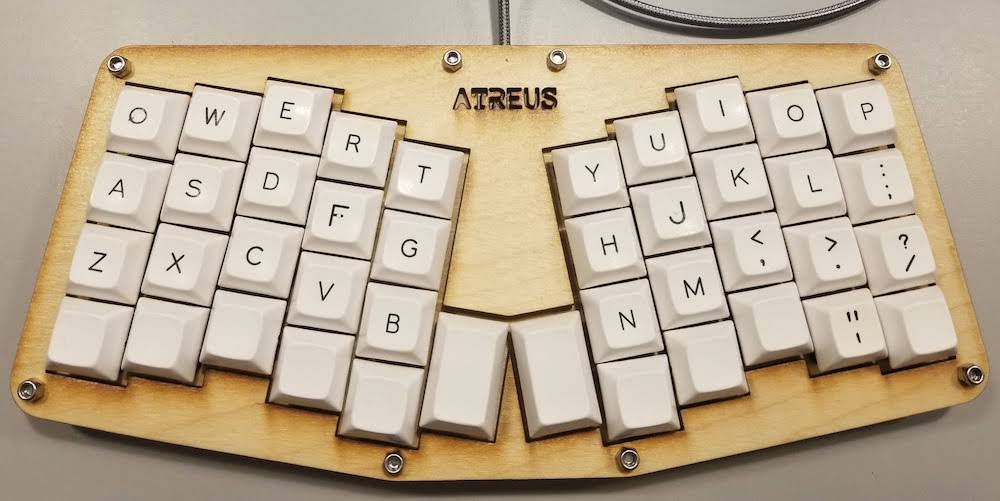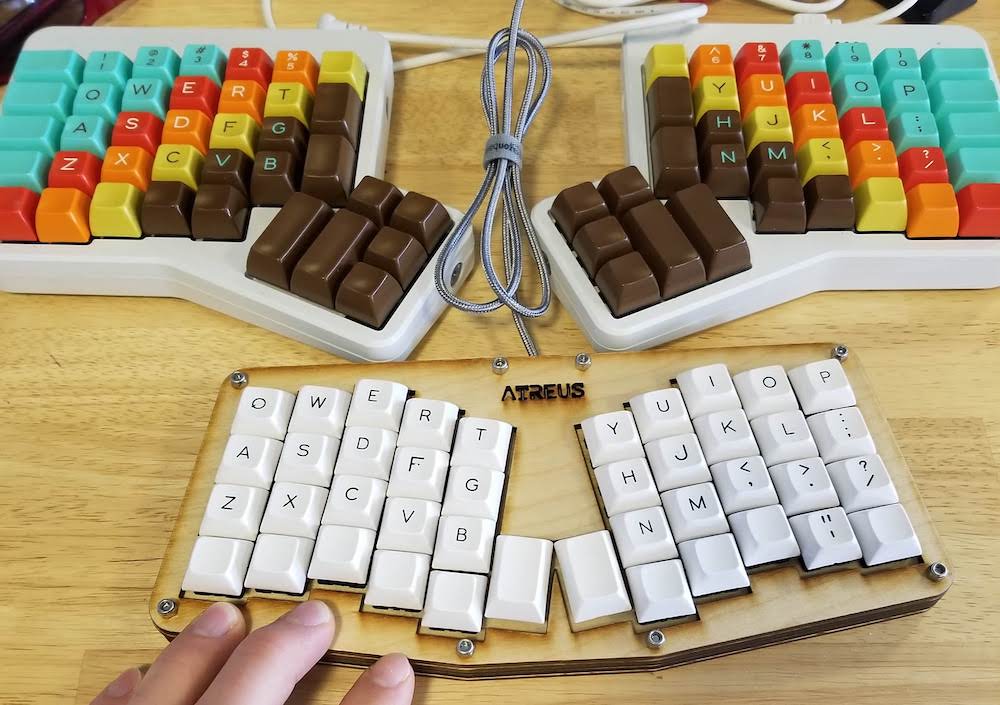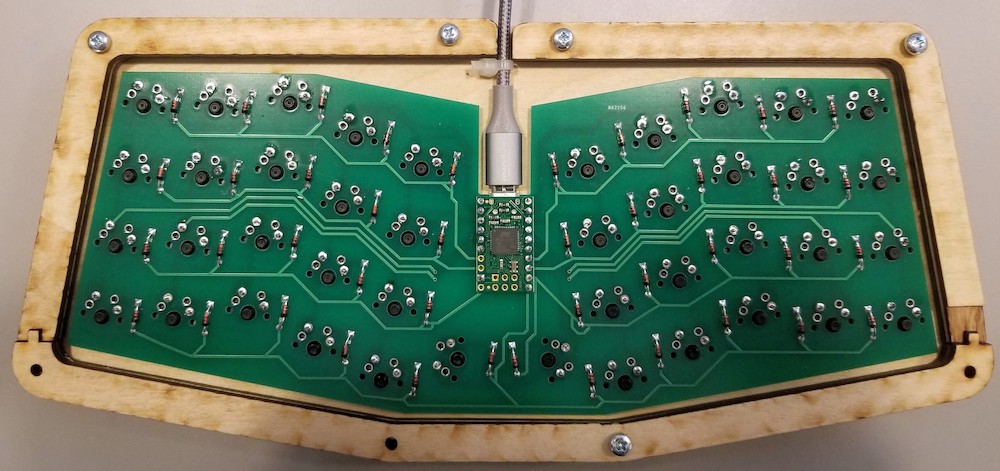I recently built an Atreus keyboard. This keyboard is an extremely small keyboard with only 42 keys. Below is the photo of my result.

As you can see, it has a split layout and the keys are aligned vertically and staggered. Thanks to using Ergodox keyboards since 2014, I'm very used to this key layout and find it superior to traditional keyboards.
The keyboard is very small. To give you an idea of how small it is, here is a photo of it next to one of my Ergodox keyboards and with a bit of my fingers in the shot.

Building the keyboard was pretty straight forward. The included instructions are thorough and include plenty of photos. All of the components are through-hole so the soldering is not difficult. This would be a good first keyboard project.
I already had USB cable, key switches, key caps, and a micro-controller so I purchased the partial kit from Phil. It came with everything else, except for something to coat the wood, that you need to build the keyboard. I wanted to connect the keyboard to USB C ports, so I used a micro to USB C cable.
I enjoyed the color of the laser cut wood and appreciated the burn marks. I didn't want to lose the color or burns so I coated the wood with a water based clear polyurethane with a satin finish. This was probably the most difficult part of the build, and it was pretty easy, simply because I lack experience finishing wood.
When reading other build logs I noticed that someone else put a zip tie on their USB cable to help prevent it from tugging on the micro-controller. I have no idea how helpful this is but it seemed like a good thing to do so I also did it. To do this you basically just wrap the cable with a zip tie and cram it against the case so that the zip tie prevents tugging on the micro-controller. You can see it in the picture below.

I've only been typing on the keyboard for basically this blog post but I've already found myself adapting to it pretty quickly. I don't intend for it to replace my Ergodox for normal usage but I think it will be a great portable keyboard.
Overall it was a fun project and I'm glad I did it. I look forward to customizing the firmware to make the key layout fit my usage.